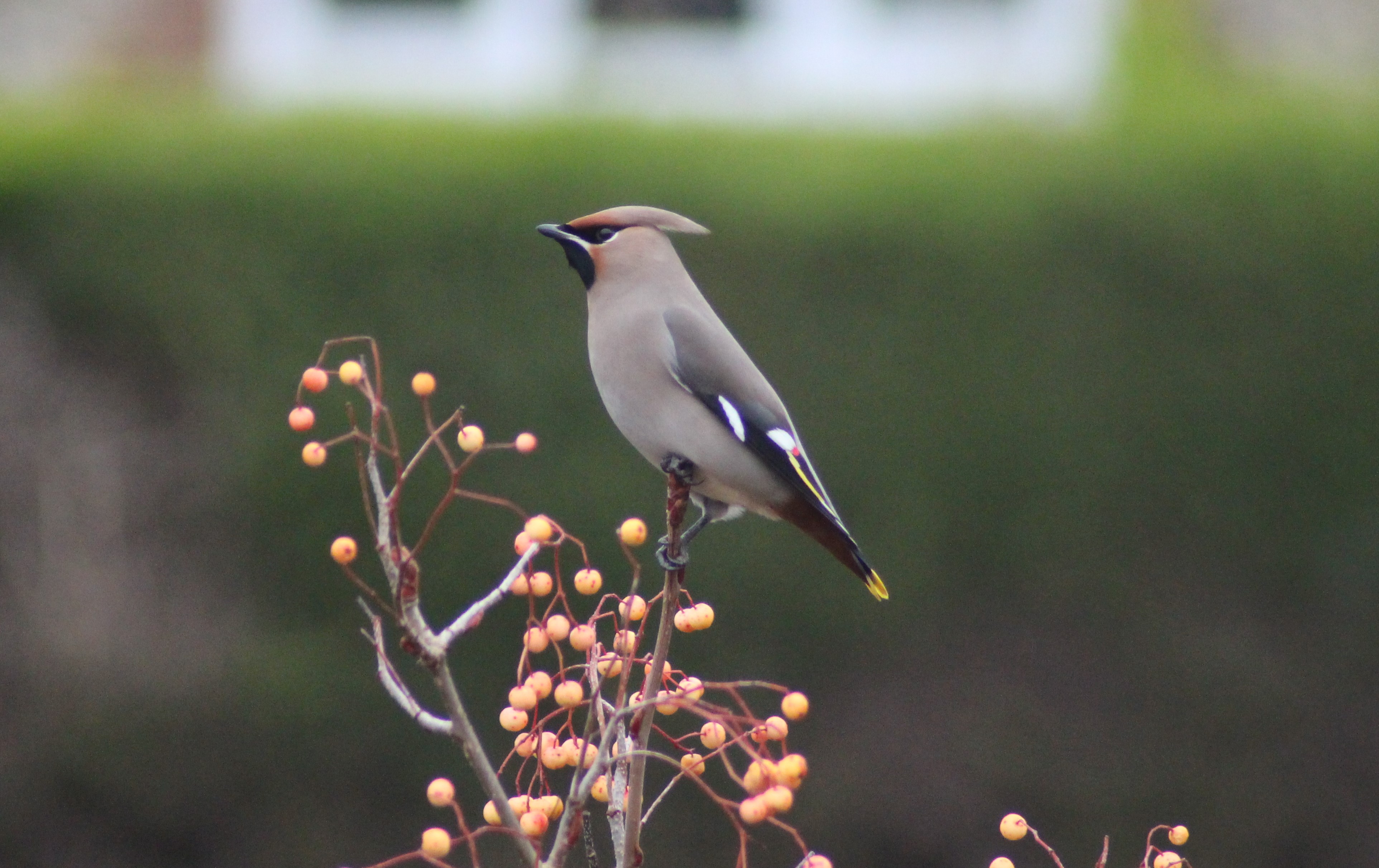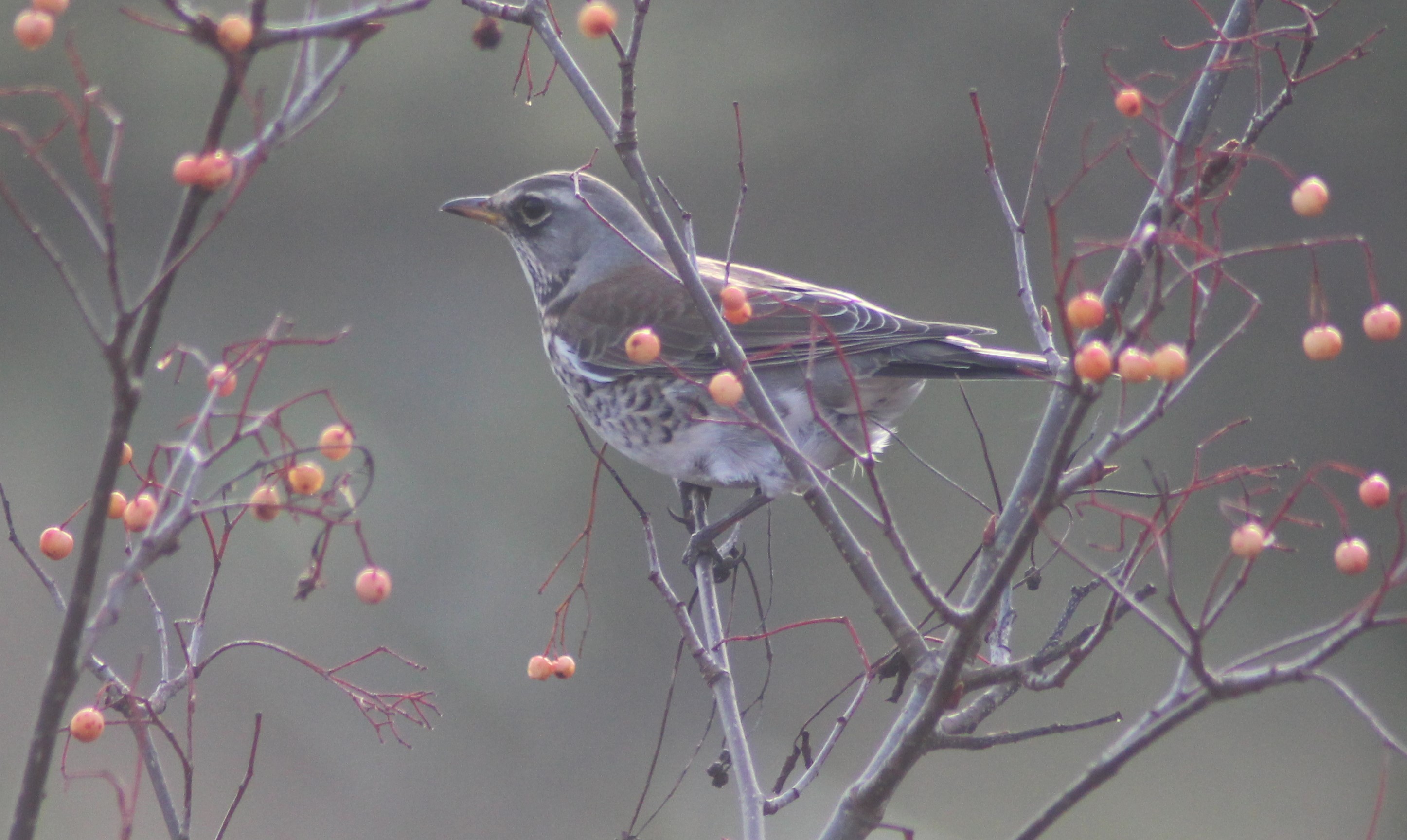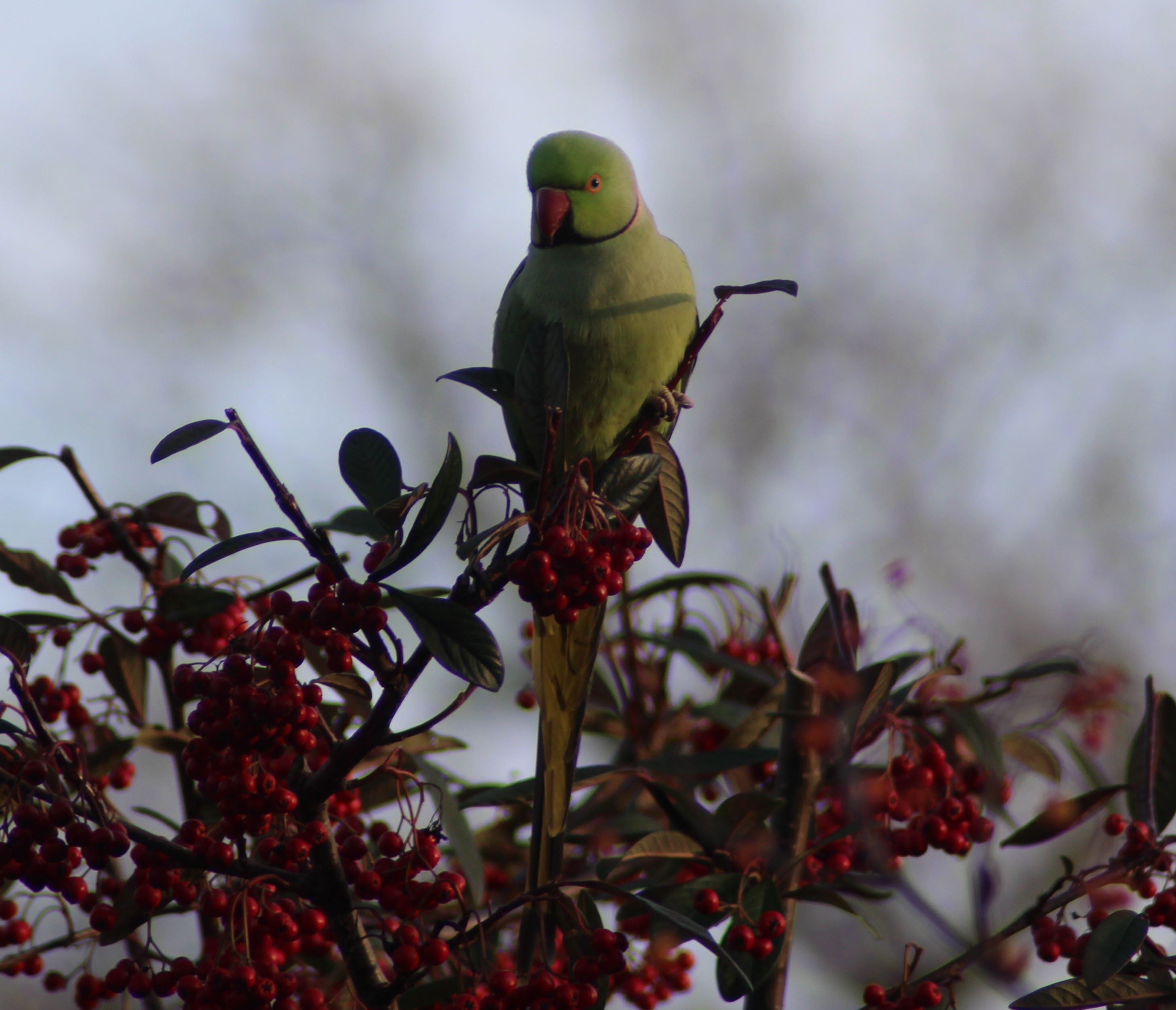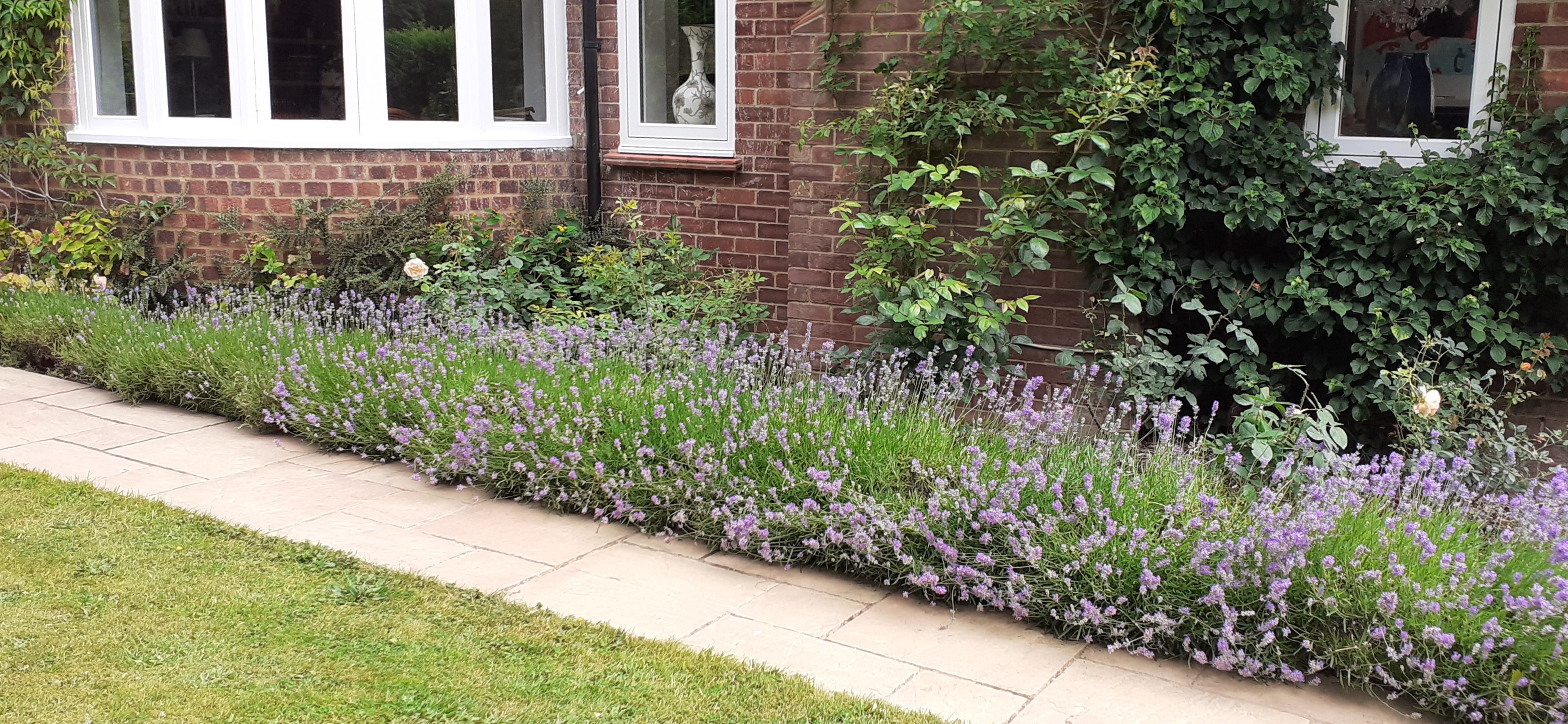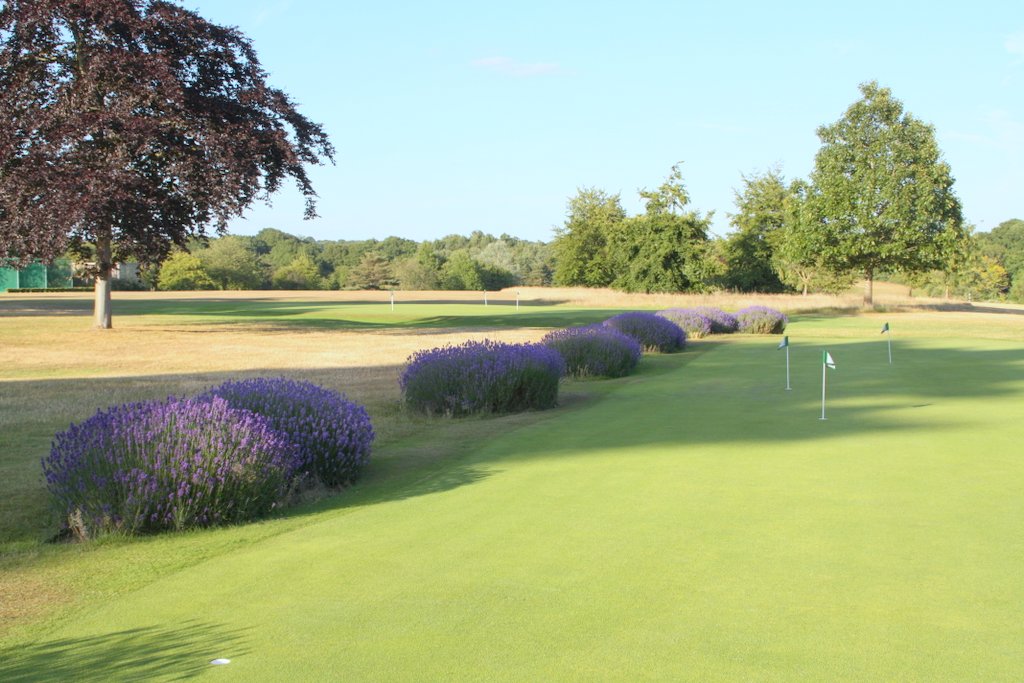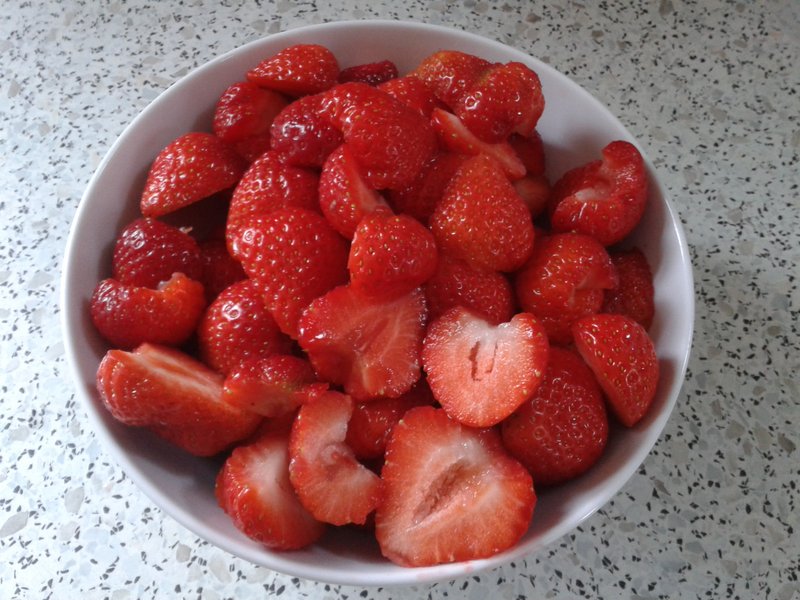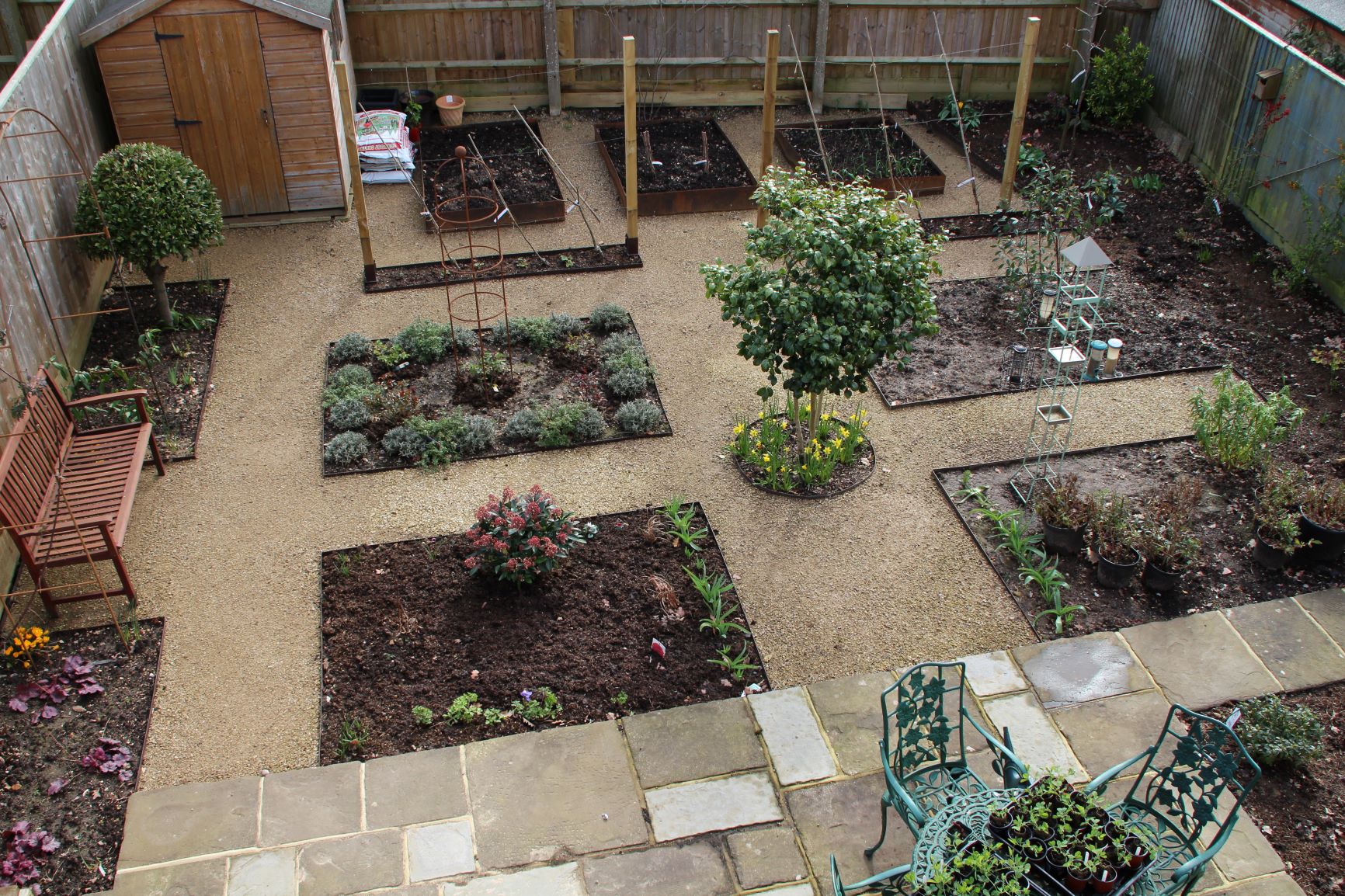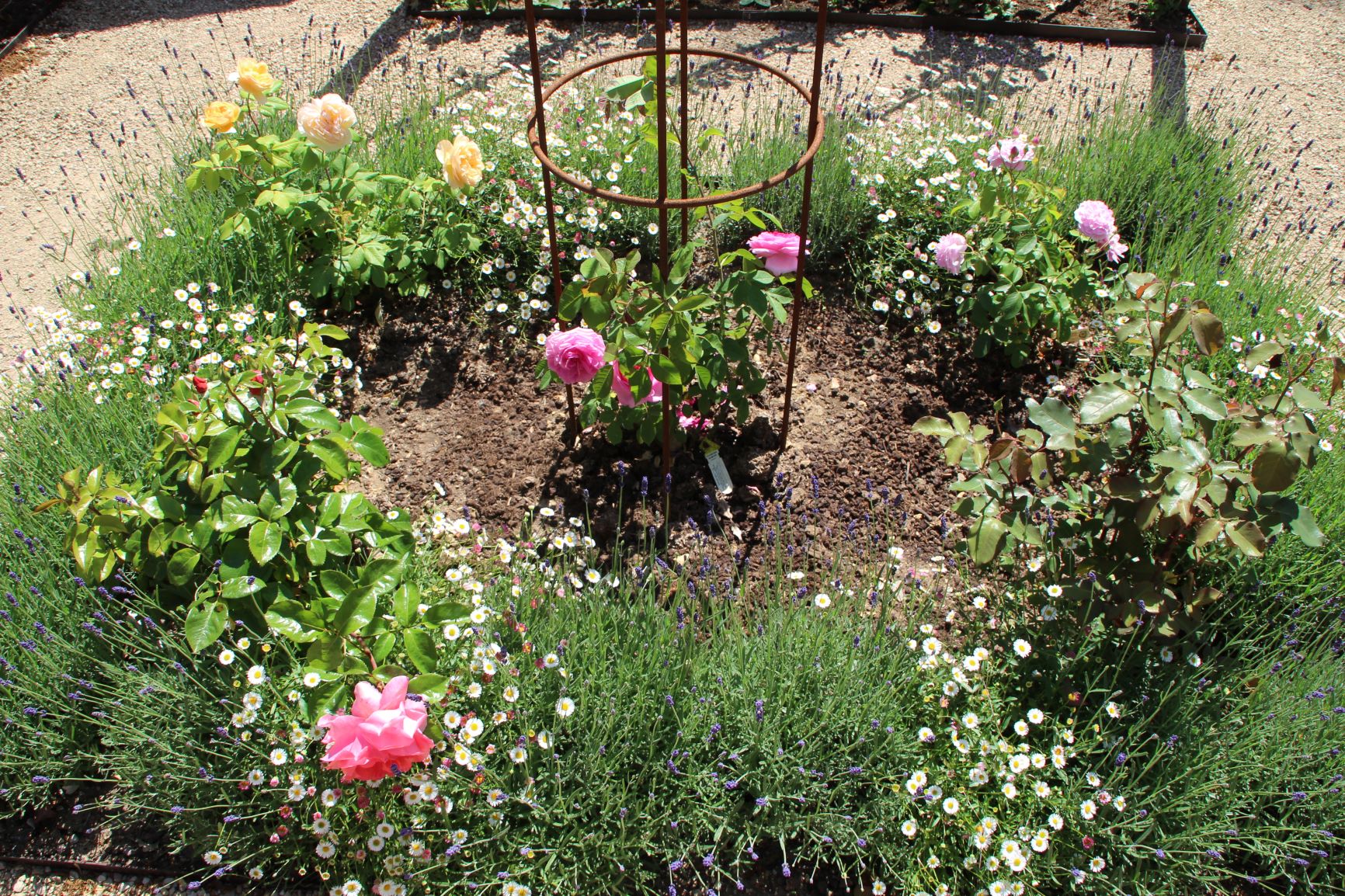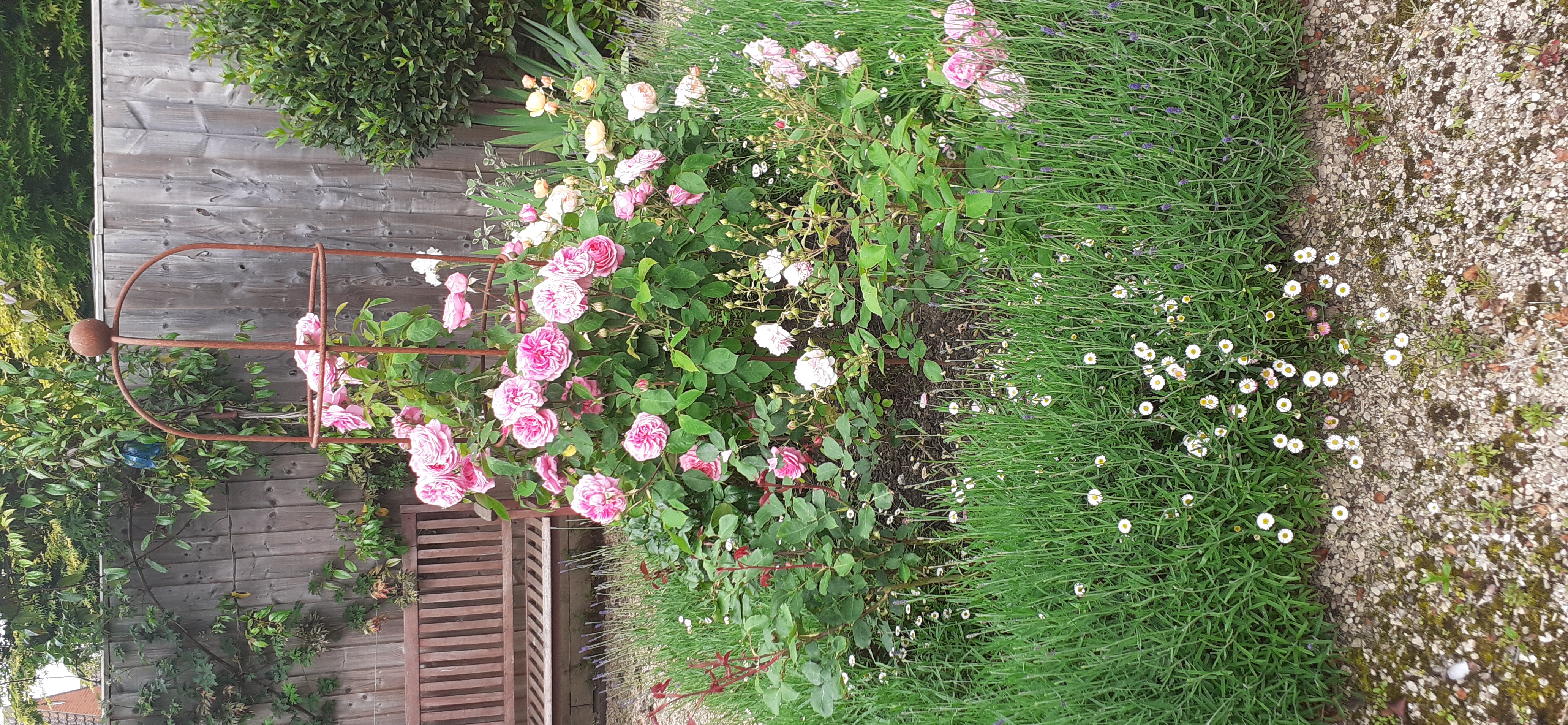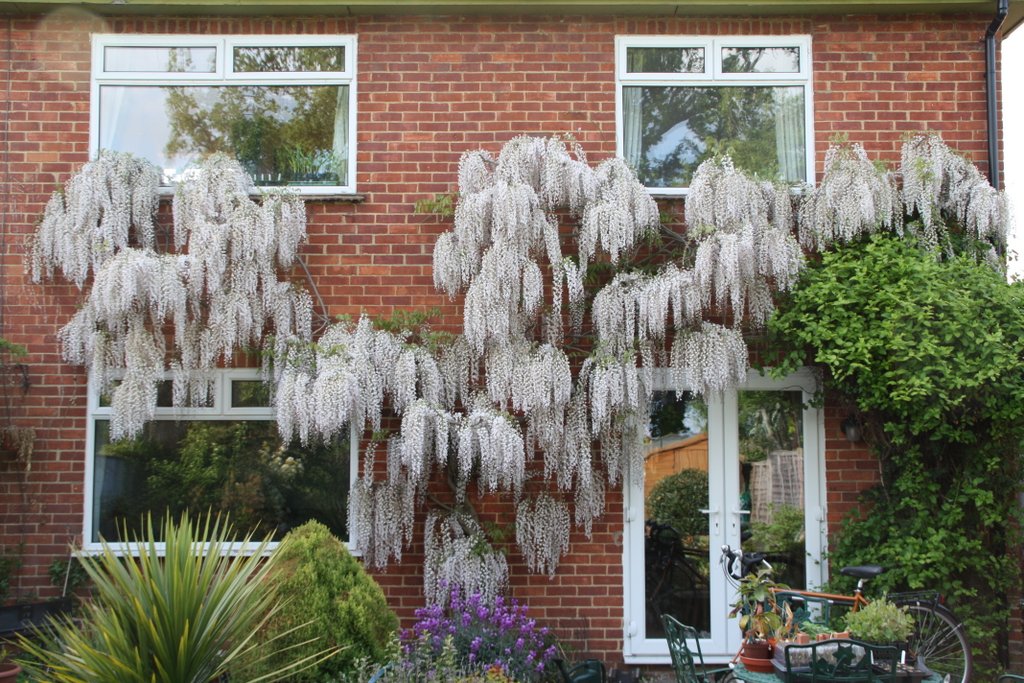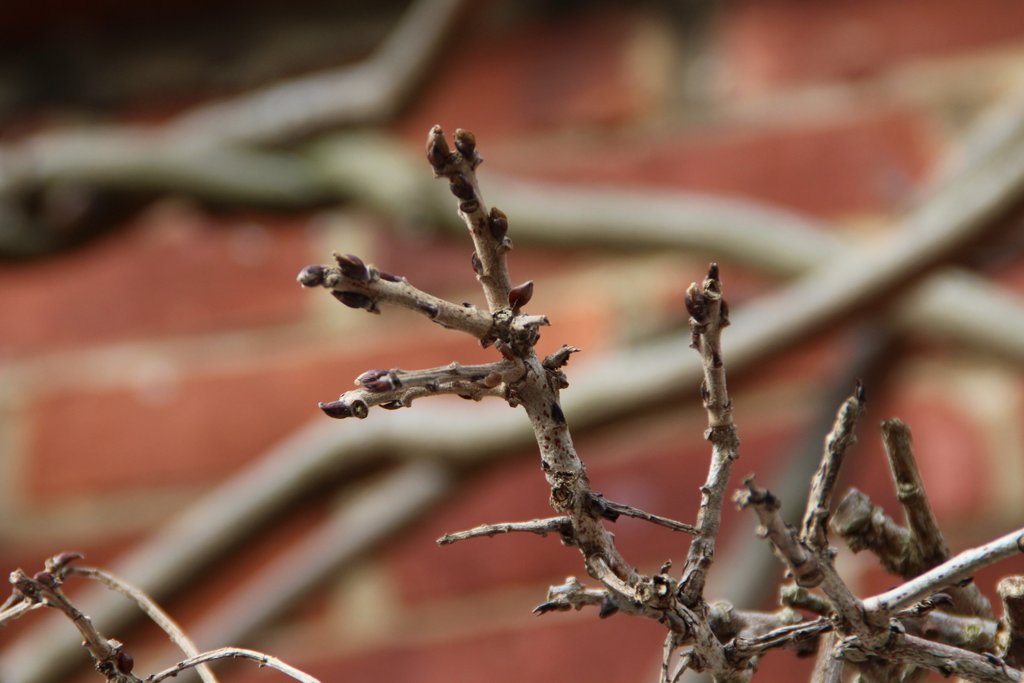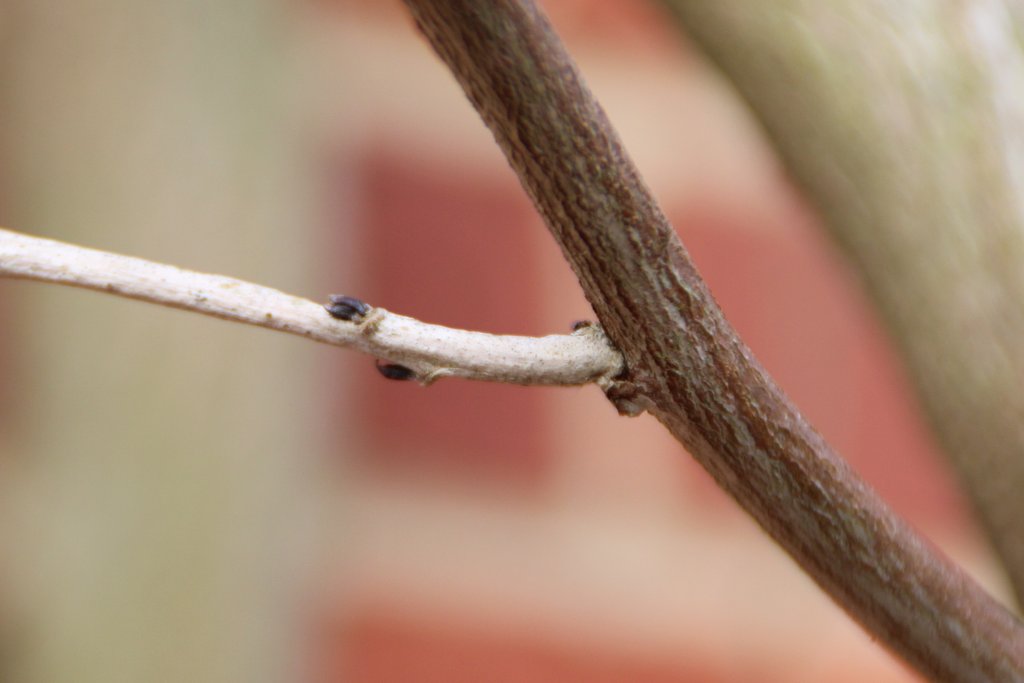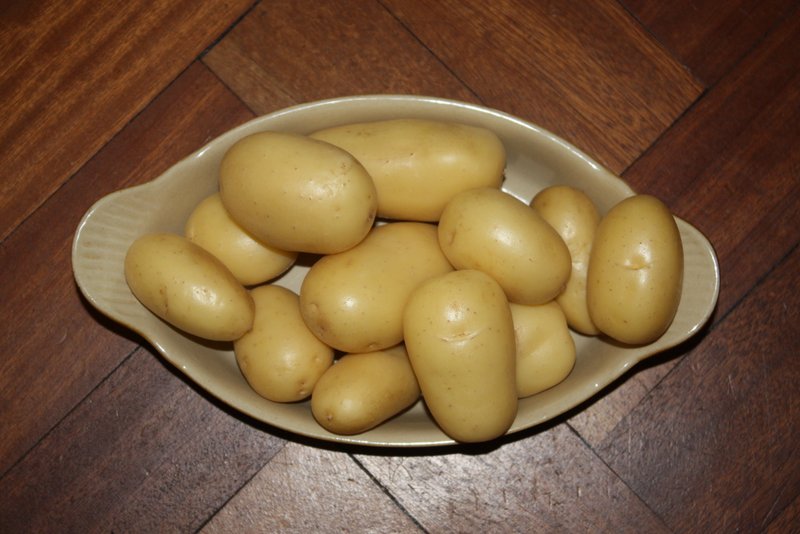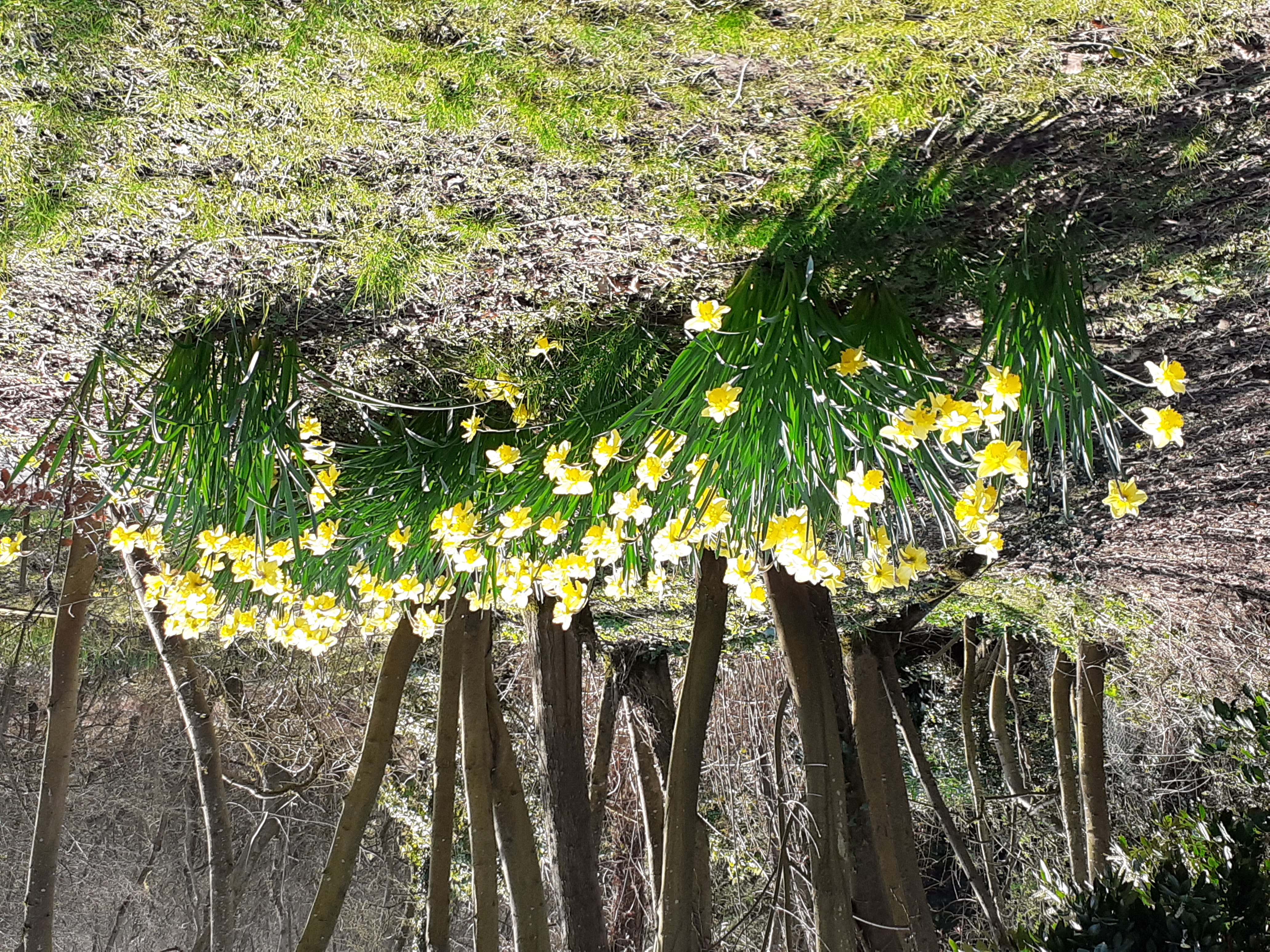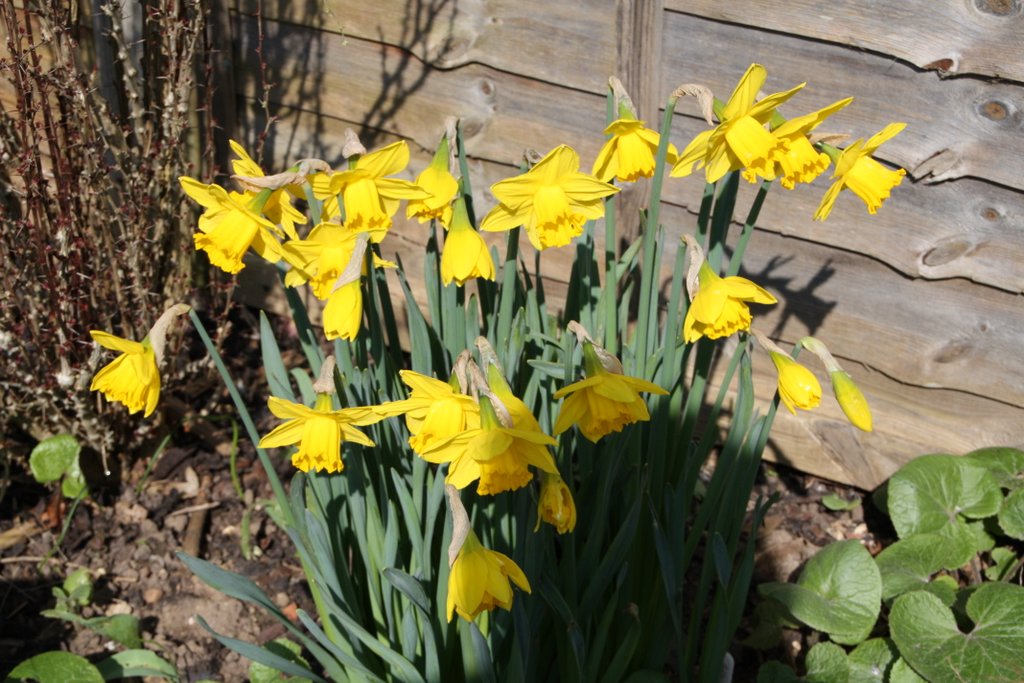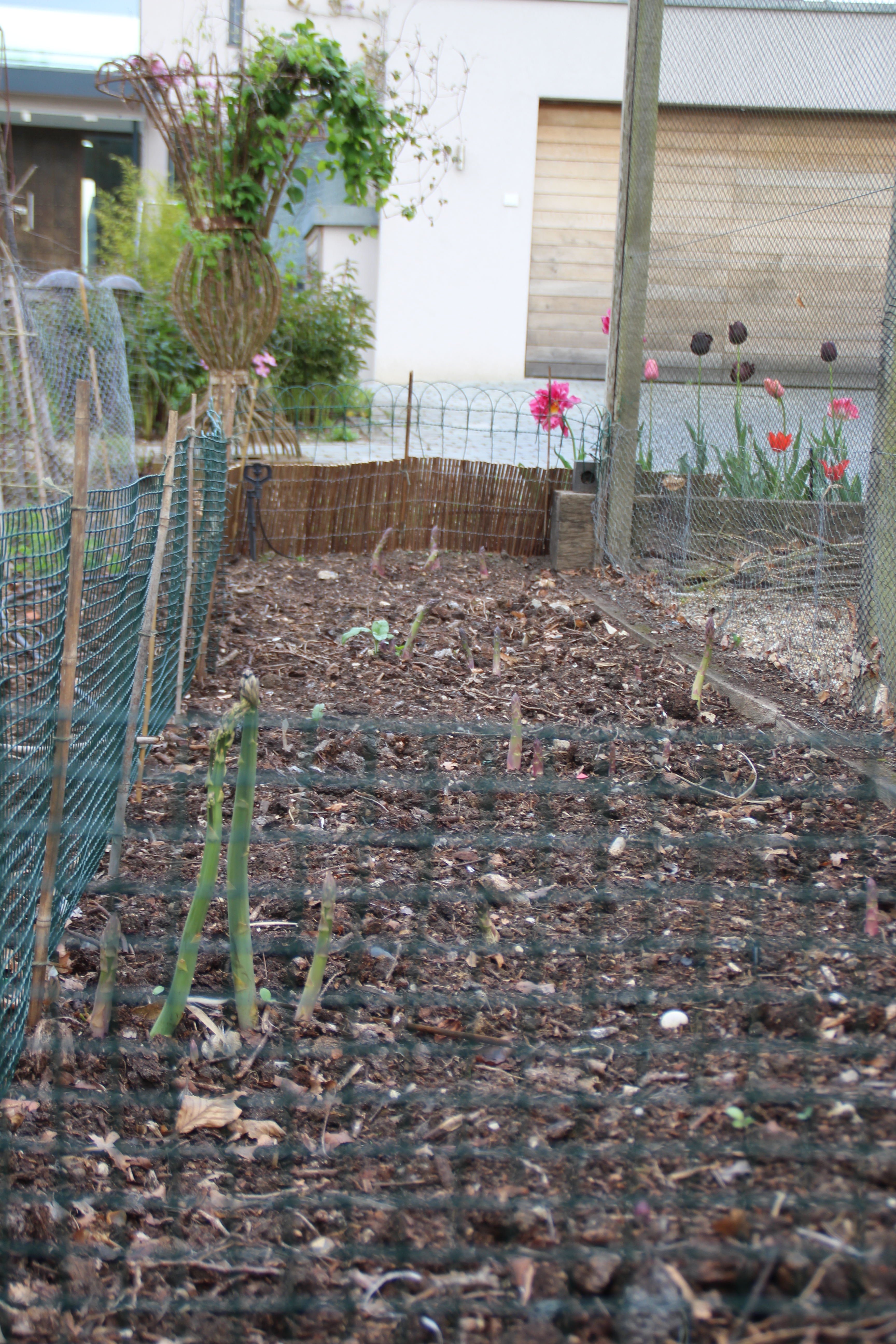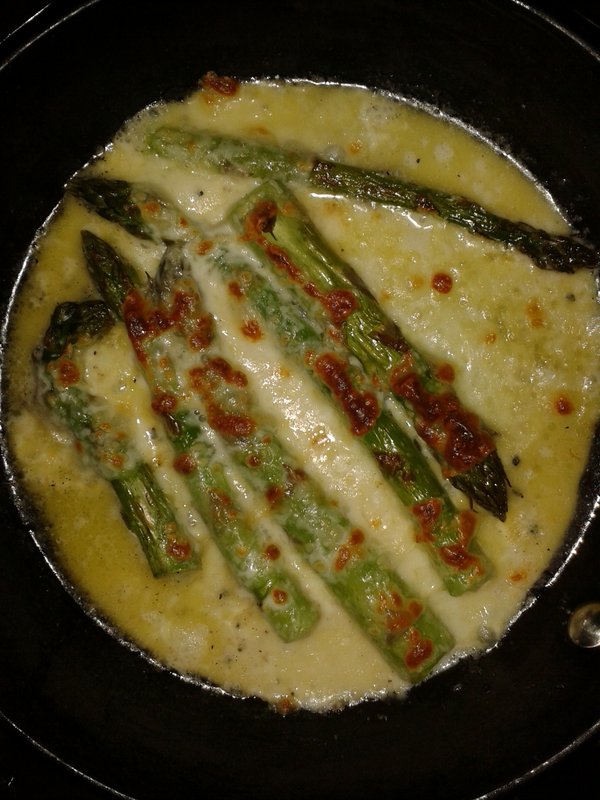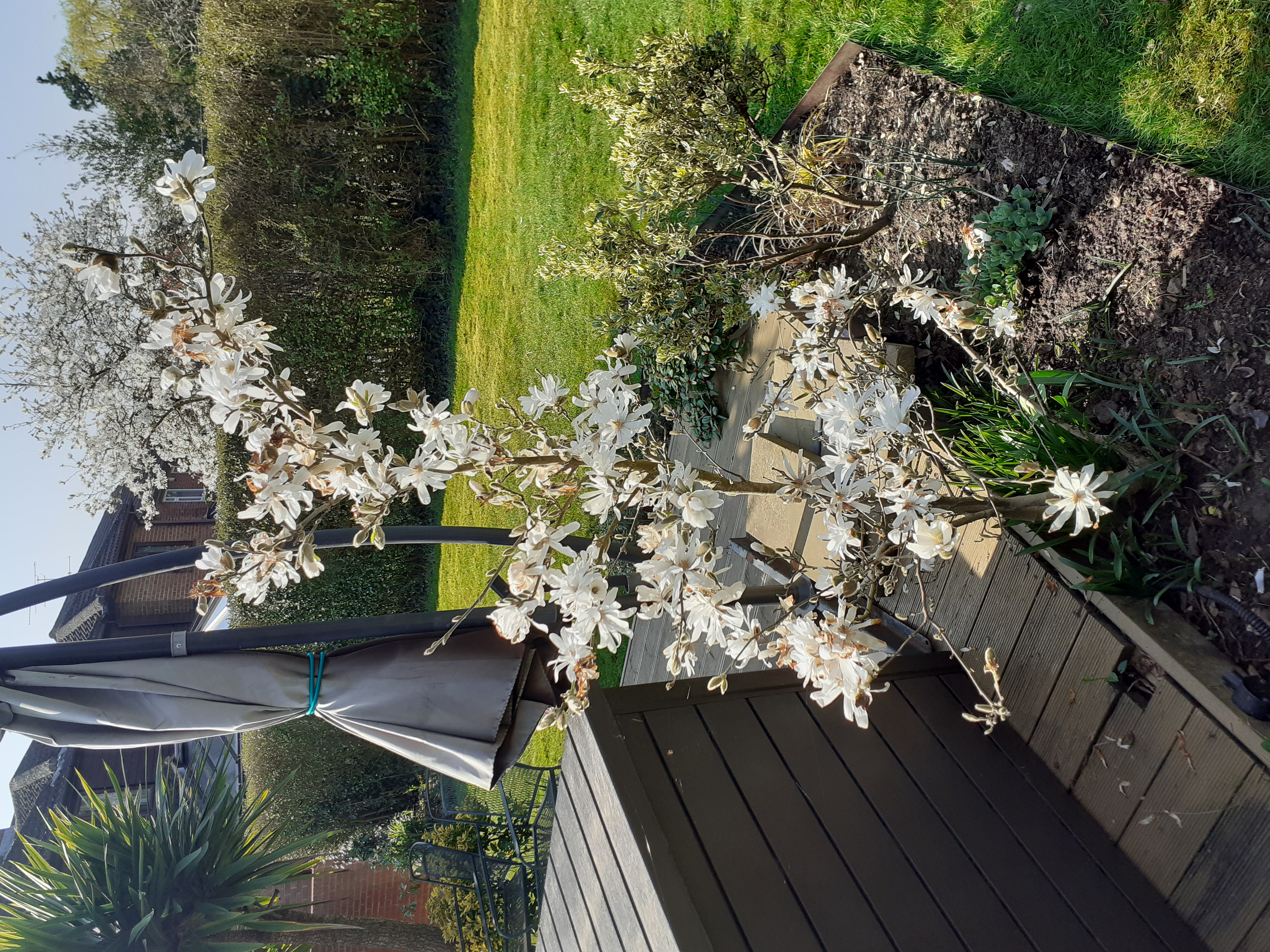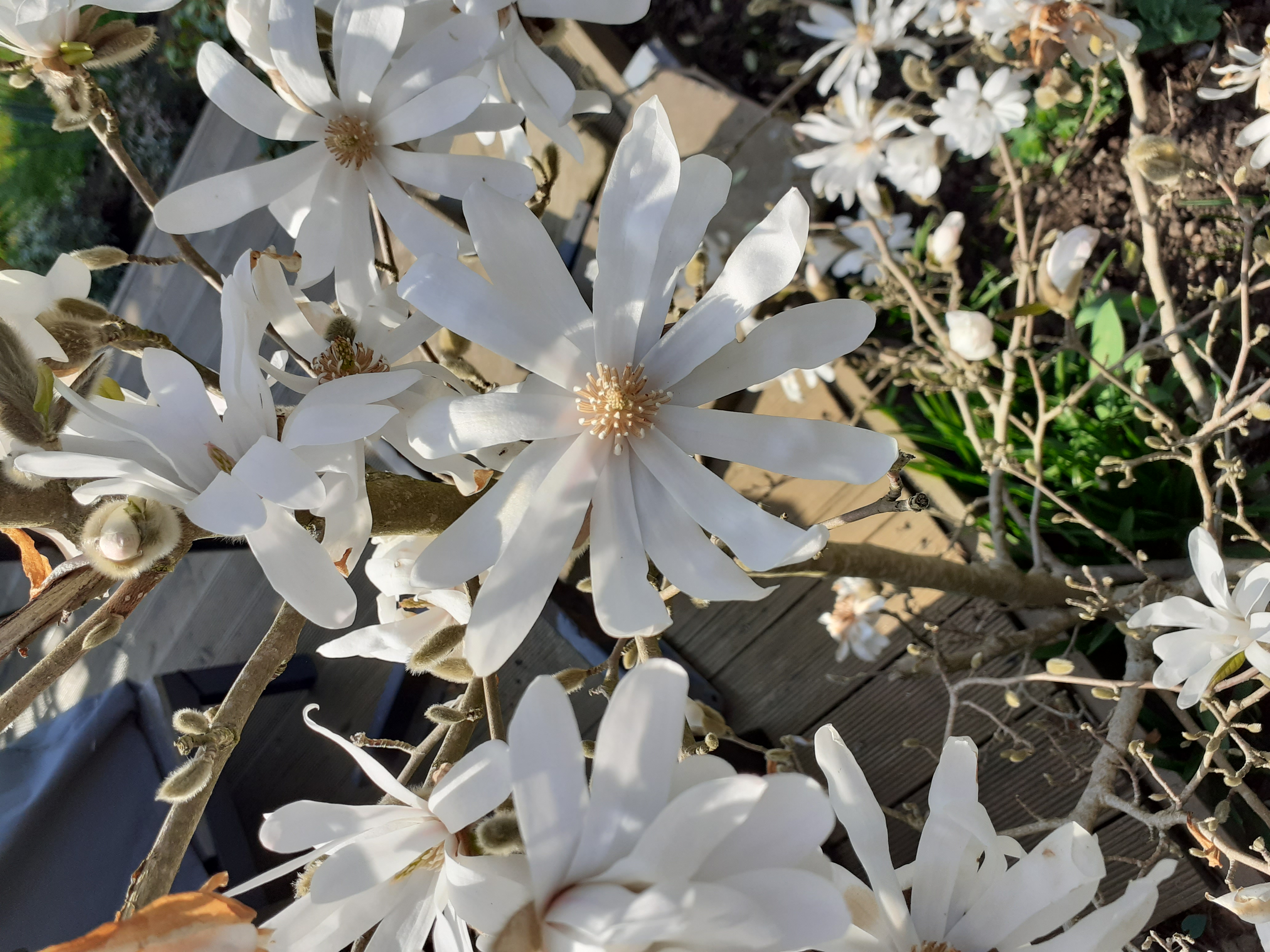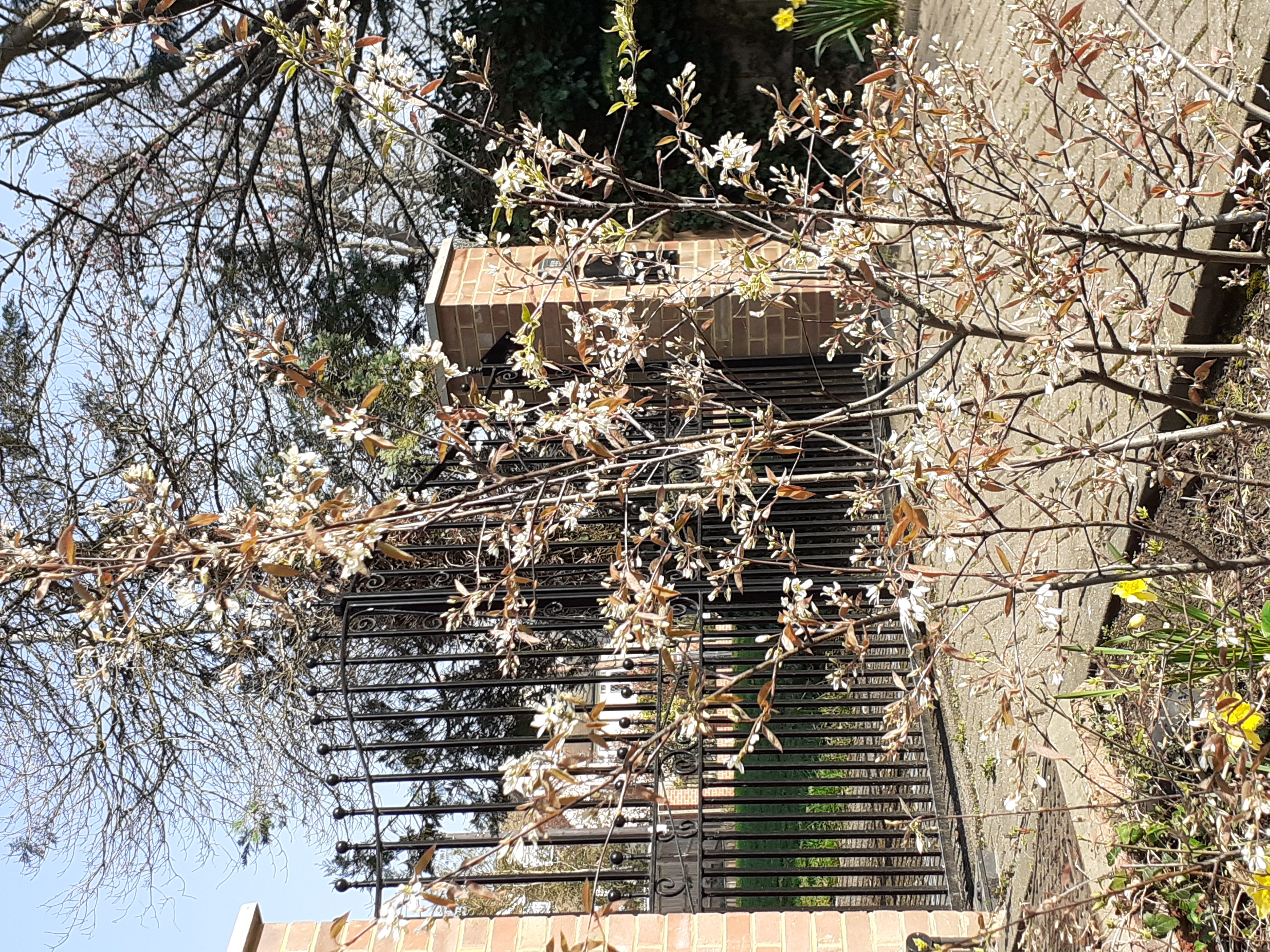In our December tips we mentioned the bonus that winter fruiting plants can yield by attracting birds to the garden in the gloomier months of the year. As if by magic we have had a glut of colourful and sometimes rare visitors in the early part of this year. The most special visitor was a waxwing, which was attracted by the berries on our Sorbus ‘Joseph Rock’. We have never seen one of these in the garden before.
The Sorbus also regularly attracts golfinches, tits and starlings, which often use it as a staging post on their way to the bird feeder.
We also had a fieldfare coming in for the berries that the waxwing had left.
Whether it was the same fieldfare or another one, the crab apple in the front garden also proved to be an attractive perch
Our cotoneaster also proved attractive to the local ring-necked parakeets. While these birds are generally considered a pest, they are undoubtedly a pretty spectacular visitor to a small garden. They soon moved on from the Cotoneaster berries to the fat snacks on the bird feeder.

